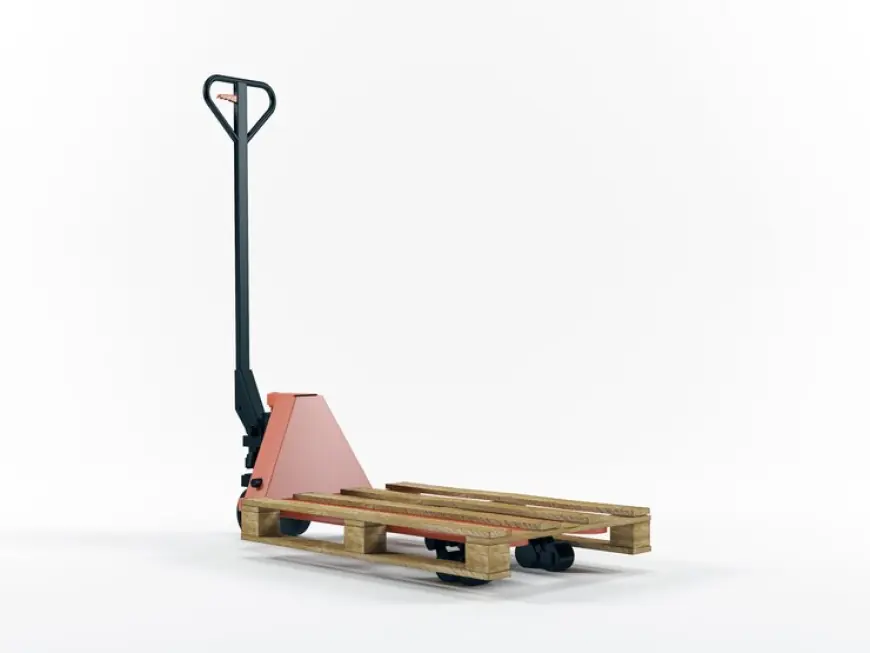A Beginner's Guide to Operating a Hydraulic Trolley Safely & Efficiently
Learn how to operate a hydraulic trolley safely with this beginner-friendly guide. Get step-by-step instructions, safety tips, and maintenance advice.

A hydraulic trolley is a useful tool for lifting and transporting heavy loads in warehouses, workshops, and factories. While it's easy to use, proper handling is essential to ensure safety and efficiency. If you're new to hydraulic trolleys, this guide will walk you through the basics of operating one safely and maintaining it for long-term use.
What is a Hydraulic Trolley?
A hydraulic trolley, also known as a hydraulic hand pallet truck or hydraulic lifting trolley, is a manually operated device used for lifting and moving heavy objects. It works using a hydraulic mechanism that allows you to raise or lower loads with minimal effort. These trolleys are commonly found in warehouses, construction sites, and industrial settings.
How to Operate a Hydraulic Trolley Safely
Before using a hydraulic trolley, it's important to follow the proper steps to ensure both your safety and the trolley’s efficiency.
1. Inspect the Trolley Before Use
Before operating, perform a quick safety check:
-
Look for any visible damage, such as cracks or leaks.
-
Ensure the wheels and handle are in good condition.
-
Test the hydraulic pump to make sure it lifts and lowers properly.
2. Position the Trolley Correctly
Place the hydraulic trolley on a flat, stable surface. Ensure there are no obstacles in your way that could cause instability.
3. Load the Trolley Properly
When loading heavy objects onto the trolley:
-
Center the load evenly to prevent tipping.
-
Do not exceed the maximum weight capacity of the trolley.
-
Use securing straps if necessary to prevent shifting.
4. Lifting the Load
To lift a load using a hydraulic trolley:
-
Position the forks under the load.
-
Pump the handle up and down to activate the hydraulic mechanism.
-
Raise the load just enough to clear the ground—lifting too high can make it unstable.
5. Moving the Trolley
-
Push the trolley instead of pulling—it offers better control.
-
Move at a steady speed to avoid sudden jerks.
-
Be cautious of ramps and slopes, as heavy loads may shift.
6. Lowering the Load Safely
To lower the load:
-
Slowly release the hydraulic pressure using the trolley’s release lever.
-
Ensure the load is placed securely on the ground before removing the trolley.
Essential Safety Tips for Hydraulic Trolley Operation
-
Wear Protective Gear – Always use safety shoes and gloves to protect yourself from accidents.
-
Avoid Overloading – Check the load capacity before placing items on the trolley.
-
Watch Your Surroundings – Be aware of other workers and obstacles in your path.
-
Store the Trolley Properly – When not in use, store the trolley in a dry place to prevent rust and damage.
Maintenance Tips for a Long-Lasting Hydraulic Trolley
To keep your hydraulic trolley in good working condition, regular maintenance is essential.
-
Lubricate Moving Parts – Apply grease to the wheels and hydraulic components to reduce friction.
-
Check for Leaks – If you notice oil leaks, inspect the hydraulic system and repair any damaged seals.
-
Clean the Trolley Regularly – Wipe off dirt and debris to prevent wear and tear.
-
Test the Hydraulic System – Pump the handle to ensure smooth lifting and lowering.
Final Thoughts
Operating a hydraulic trolley is simple when you follow the right procedures. By inspecting the trolley, handling loads properly, and following safety precautions, you can ensure smooth and safe operation. Regular maintenance will also extend its lifespan, making it a valuable tool for years to come.

 buildingmaterialsupplier
buildingmaterialsupplier 










